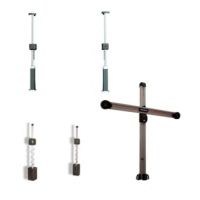29
CALIBRATION
CHAPTER 3
CHECKOUT, CALIBRATION AND MAINTENANCE
TROUBLESHOOTING THE SYSTEM
Before using this troubleshooting guide there are some steps that the user must follow. Failure to follow these
guidelines will result in longer repair times and repeated callbacks. In using this guide always start with ba-
sics regardless of the complaint. Some of the screen captures in this Chapter were taken using a two camera
system. Servicing an Ultra Arago or V3400 will only add an additional camera view. The troubleshooting is
handled the same.
GUIDELINES
• Before beginning any diagnosis verify the customer’s complaint and aligner’s condition in great detail.
In many cases the problem is not the equipment, it’s an operator error.
• Never make more than one change at a time on a defective machine. This could result in extended
repair times and unnecessary parts replacements.
• If the replacement part did not x a problem reinstall the original component. (Before trying something
else)
• If the replacement part appears to x the machine take a few minutes to reinstall the defective part and
verify the repair and diagnosis. Verication always ensures that the problem has been resolved and
usually prevents a return service call.
• When sending a defective part back for repair a detailed description of the failure should be included
with it. Failure to follow this procedure may result in a failed part getting returned to the eld un-xed.
• Every Technician should keep a notebook with descriptions of errors, and xes he has encountered on
the aligner. It’s easier to repair future problems based on known good experiences instead of guessing
what was done the last time this problem was seen.
• Always have current software on-hand.
DEFINITIONS
Several types of calibration are discussed or mentioned in the following pages.
• RCP is Relative Camera Position. It is the calibration that we do to a 2 camera system to know where
the two cameras are with relation to each other. Must be done when you swap out a camera.
• RTP is Relative Target Position. We do this for the 3D target to know where one of the sub targets is
with relation to the other sub target. We also do this in RCP when we put the cal bar on one side of
the rack (the 2 targets are visible in 1 camera).
• RCTP is Relative Camera to Target Position. This is the relative position of the calibration target to
the wheel camera in the RCTP pod. This needs to be updated any time that pods camera is replaced.
• RCCP is Relative Camera to Camera Pod. This is the relative position of the calibration camera to
the wheel camera in the RCCP pod. This needs to be updated any time that pods camera is re-
placed.
• TID is Target ID. It is a process in which we measure the relative position of the target to the center of
the clamp claw points and save it for later use.

